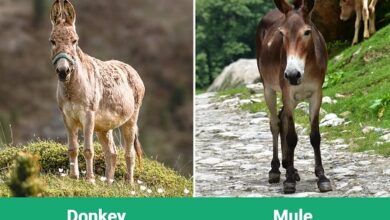Classification of natural resources with the 8 main categories
Classification of natural resources
The classification of natural resources shows us the diversity of materials and elements available in nature that we can use to develop all kinds of technological solutions to our problems. In this article, we will see what the different types of natural resources are and several examples of these categories, which can be used to distinguish between renewable and non-renewable, potential and current, biotic and abiotic resources, and in reserves or in stock.
Explanation of the natural resources
Let’s start with the most important thing: what are natural resources? We can define them as elements that exist in nature (that is, they do not exist thanks to the work of human beings) and that, after being introduced into a product production process, they can receive an essential utility for the way of life of societies human .
Thus, natural resources serve to maintain the basic biological processes of the members of our species, and also enable a way of life that defines our communities, shaping their ways of socializing or their way of inhabiting environments and environments. extract other resources from nature.
As we will see, technological development and the application of human intelligence to the management of environments have transformed natural resources into a wide variety of solid, liquid and gaseous elements (although it has also had negative consequences for the environment).
In addition, natural resources are the subject on which the activity of the extractive industry is based , an important part of the primary sector of the economy and which is at the beginning of the productive chain of products used by our species to satisfy the most diverse needs.
In turn, it is necessary to monitor and record the way in which natural resources are extracted from the Earth’s surface, because this process has a high environmental cost that must be minimized in order to preserve the environment as much as possible and prevent the existing balance in ecosystems from and biomes is broken due to human interference.
Given a brief definition to understand this basic concept of human existence, let us now see how natural resources are classified according to different criteria.
1. Non-renewable resources
Non-renewable resources are those that degrade at a much higher rate than it takes to form, meaning that in practice it’s as if we have a finite amount of these materials .
On the other hand, extracting these materials from the earth in profitable quantities is something that is now only available to the big mining companies and the oil industry.
Examples of this category of natural resources are the elements used in the manufacture of fossil fuels and certain minerals and metals used in industrial processes.
Usable minerals and metals
Among these useful materials for human society, we find examples as common as copper or iron, which gave rise to the first civilizations .
Fossil fuels
Coal, thanks to which the first Industrial Revolution was produced , is an example of a material used as fossil fuel and oil (although the latter has many other uses and applications that go far beyond obtaining energy.
2. Renewable resources
Renewable resources are not degraded at a fast enough rate to be considered that a finite amount of them are available, given that the natural dynamics of planet Earth already produce more resources of this type by itself .
Food
Natural environments provide us, in most of their ecosystems, food from which the human species can nourish itself . The direct use of these resources, without going through agriculture or domestication, was the way of life that hominids adopted for hundreds of thousands of years, starting with the adoption of the typical customs of hunter-gatherer villages.
Obviously, the overexploitation of certain plants, fungi and animals can lead to the extinction of some species , which impoverishes ecosystems and makes them unstable.
Water
Water is one of the most representative examples that can be included in this category.
Although fresh water is present in large amounts in the Earth’s crust, contaminating it can make it unfit for consumption.
Air
Air is one of the most important types of natural resources for any animal, without it we would die in a matter of minutes . As with fresh water, it is available in large quantities, but its mixture with certain gases can make it toxic and unsuitable for use by our bodies.
Sun light
Sunlight can be used to obtain energy for direct use in our new technological systems based on solar panels that transform sunlight into electricity, but also influence agriculture .
3. Resources in stock
These are pools of resources whose location we know, but whose exploitation is currently impossible , because we lack the technology to do so. This is what happens, for example, with freshwater deposits that are at great depth under a very thick layer of rock.
4. Potential resources
This category is used to classify natural resources whose location is known approximately, although for different reasons it is still not possible to extract them from nature and use them profitably, something that may happen in the medium or long term . term, depending on the plans we draw up and the priorities we have .
For example, if it is known that under a certain mountain there are copper deposits, but the market situation makes capital investment in the extraction of this material unfeasible, we are talking about a potential natural resource.
5. Reservations
Reserves are deposits of fossil fuels of which we know the basic information and whose exploitation is already possible with the technology we have , and it would also be profitable to do so, but which are not being exploited at the moment.
6. Current resources
Unlike what happens with the previous concept, in this case we are talking about deposits of natural resources, of which we already know exactly all the most important information, we have already managed to access them and they are already being exploited .
7. Biotic resources
This category includes all natural resources of organic origin and can be cultivated or domesticated to have a more or less regular extraction rate (not necessarily in large quantities).
These are typically plants, animals, and fungi , as well as certain bacteria, although in many Western countries a debate is raging over whether sentient animals should be considered resources.
8. Abiotic resources
In this last part of the classification of natural resources, we find materials that are not of living organic origin : minerals, water, sunlight, air, natural gas, etc.




